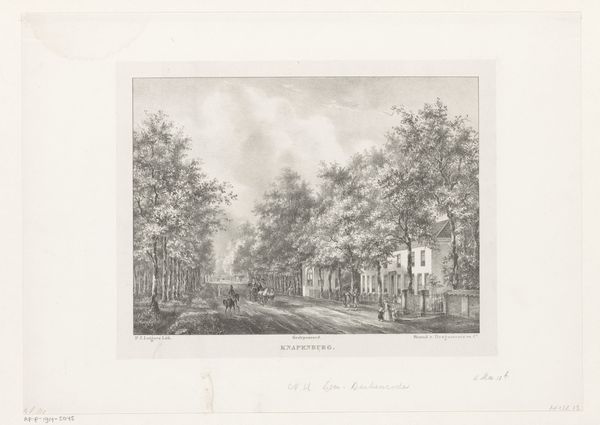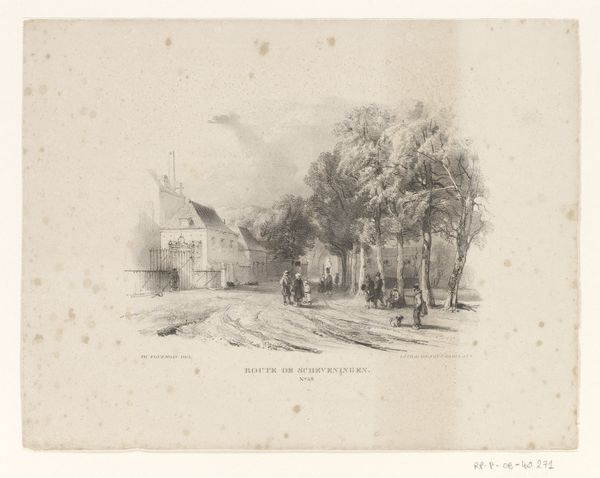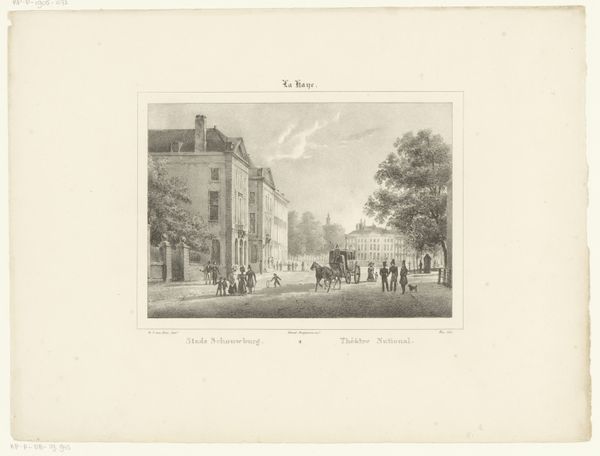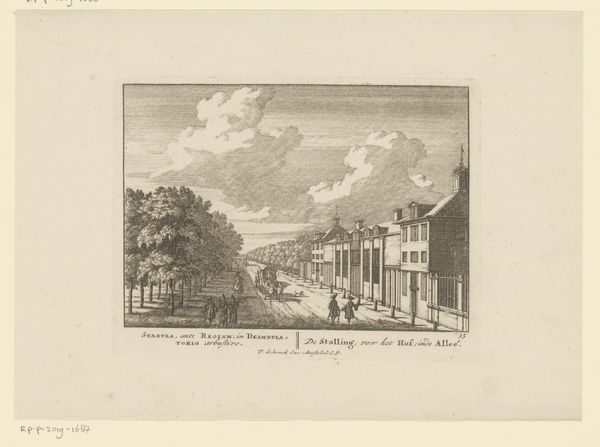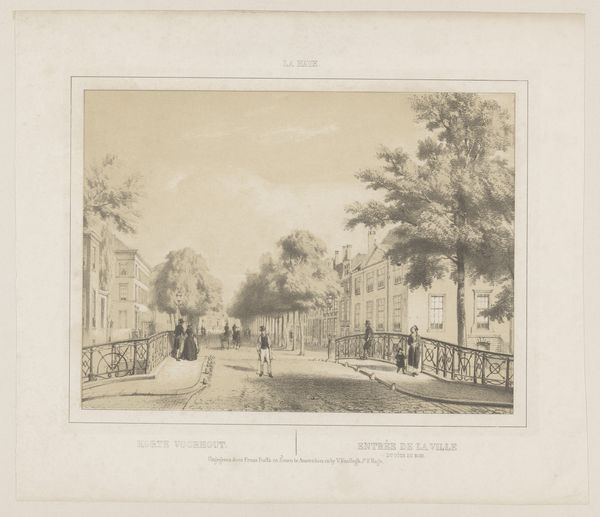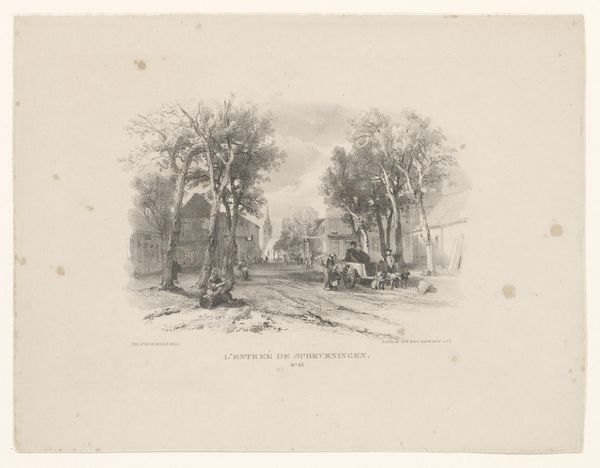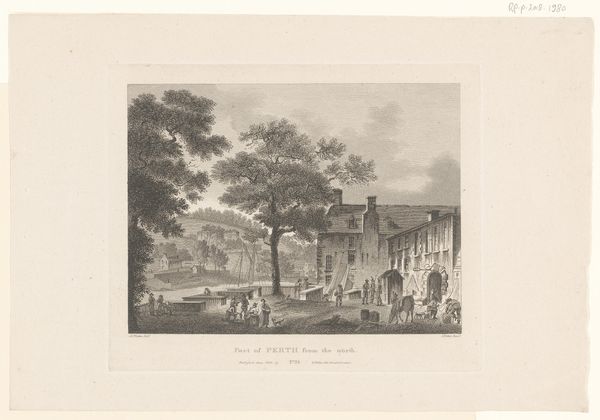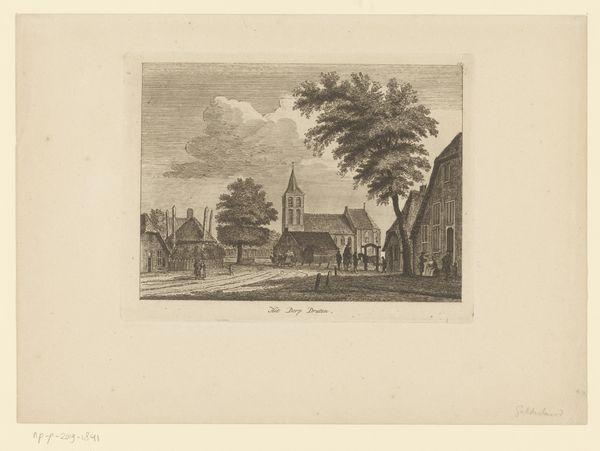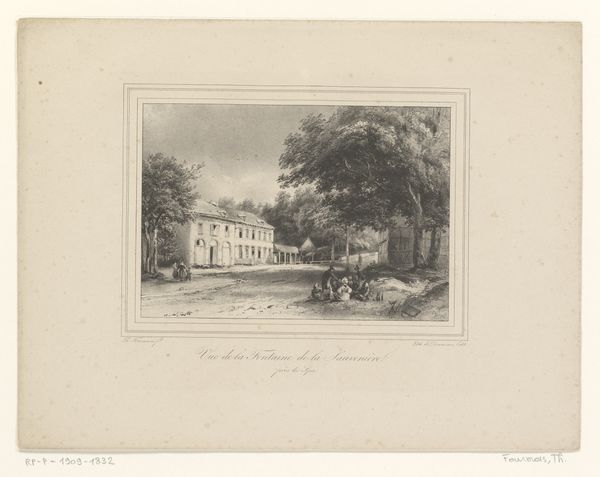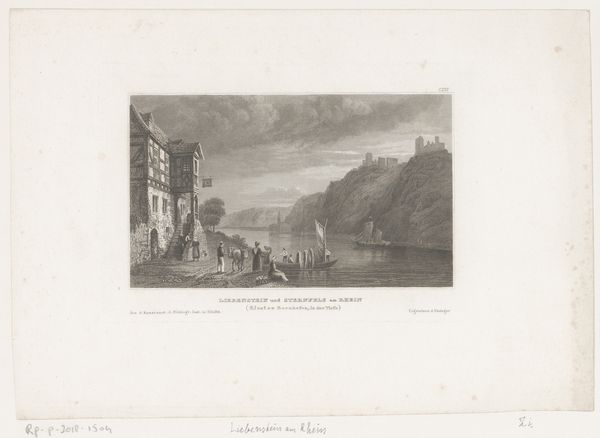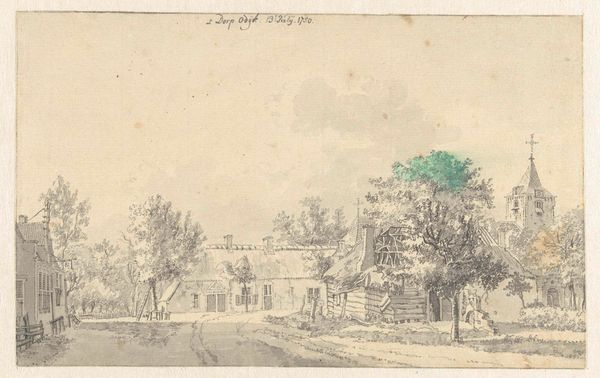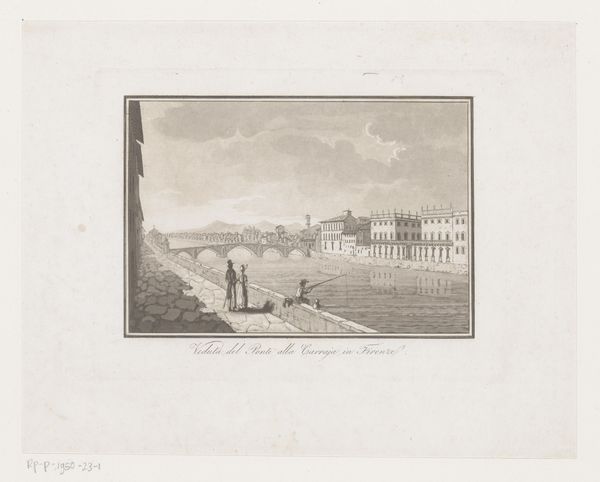
#
light pencil work
#
quirky sketch
#
pencil sketch
#
old engraving style
#
personal sketchbook
#
pen-ink sketch
#
ink colored
#
sketchbook drawing
#
watercolour illustration
#
fantasy sketch
Dimensions: height 265 mm, width 330 mm
Copyright: Rijks Museum: Open Domain
Curator: This is J.B. Clermans' "Gezicht op Het Rechthuis en de Middenweg in de Diemermeer," created sometime between 1826 and 1839. The work's name translates to "View of the Courthouse and the Middenweg in the Diemermeer." Editor: It feels so quaint, almost idyllic. I am drawn to the composition – the linear perspective emphasizes that long road flanked by trees and figures walking by. Curator: Right, Clermans utilizes delicate linework to define the architecture of the courthouse and to bring depth into the scene, yet look how economically he describes the human figures and landscape elements! Considering the historical context, Diemermeer, which this work depicts, went through many major infrastructure developments during this period that had ramifications in people's lives. Editor: Absolutely, and to me this speaks of land rights and jurisdiction; that courthouse symbolizes the centralization of legal authority at that time. We see it imposed almost gently into this previously agrarian landscape, literally at the "end of the road". What do you make of that artistic choice to show people in motion on this path? Curator: To me, it points toward a burgeoning era where canals and waterways supported increasing commercial endeavors in and out of town—with that road at the centre of it all as the material route for it. People from all backgrounds converged, and I believe that artistic process became central. It’s evident when assessing what was prioritized—material details or idealized themes? Editor: It’s thought-provoking how that linearity impacts the whole scene by almost turning these pedestrians and riders on the road into symbolic figures: travellers and merchants traversing cultural and material shifts, perhaps with that stately courthouse gazing over these individuals? Curator: Interesting interpretation. What remains crucial to understanding, as I observe the labor that has transpired here in the etching, is the degree to which craftsmanship intersects social meaning through depiction… Editor: Well, the picture evokes, for me, those very notions of cultural integration and also speaks to how landscapes embody more than simply land during those historical epochs of material exploitation. It is, perhaps, a silent yet vocal study about people. Curator: In that sense, considering how the infrastructure’s labor transformed landscapes and lifestyles within specific regions reveals fascinating complexities as far as these historical etchings! Editor: Agreed. Its value for our present could lie exactly in that: by inspiring us to see familiar environments through different lenses – those of power structures and material changes – hopefully opening a dialogue with ourselves regarding who is on that path now!
Comments
No comments
Be the first to comment and join the conversation on the ultimate creative platform.
